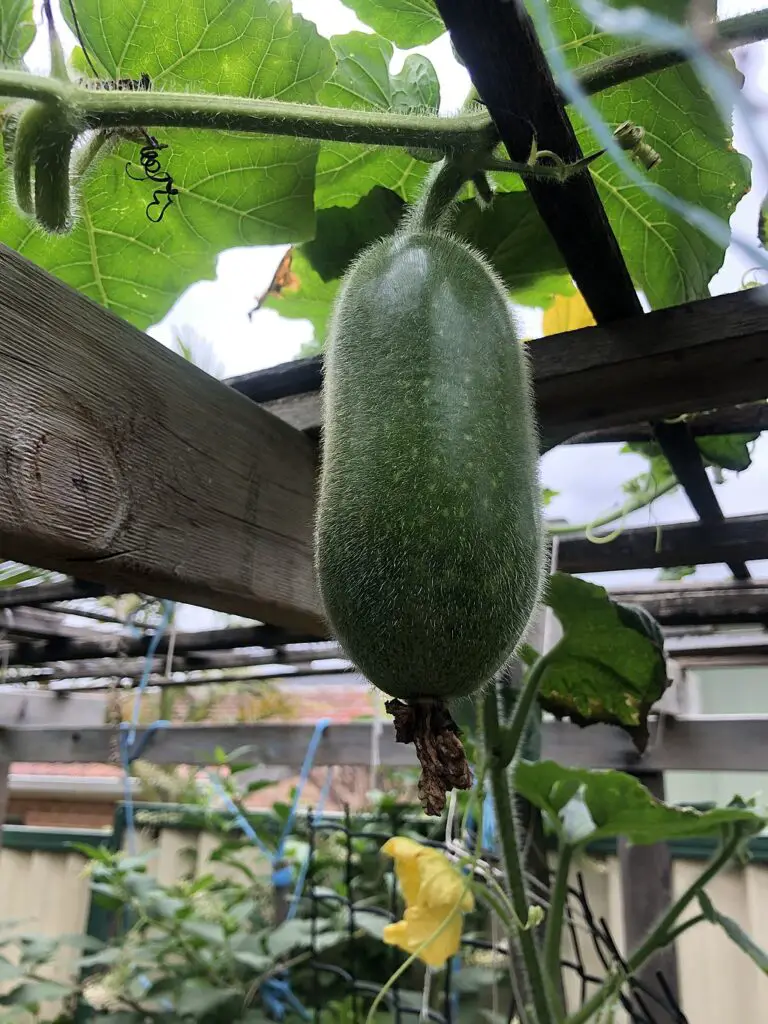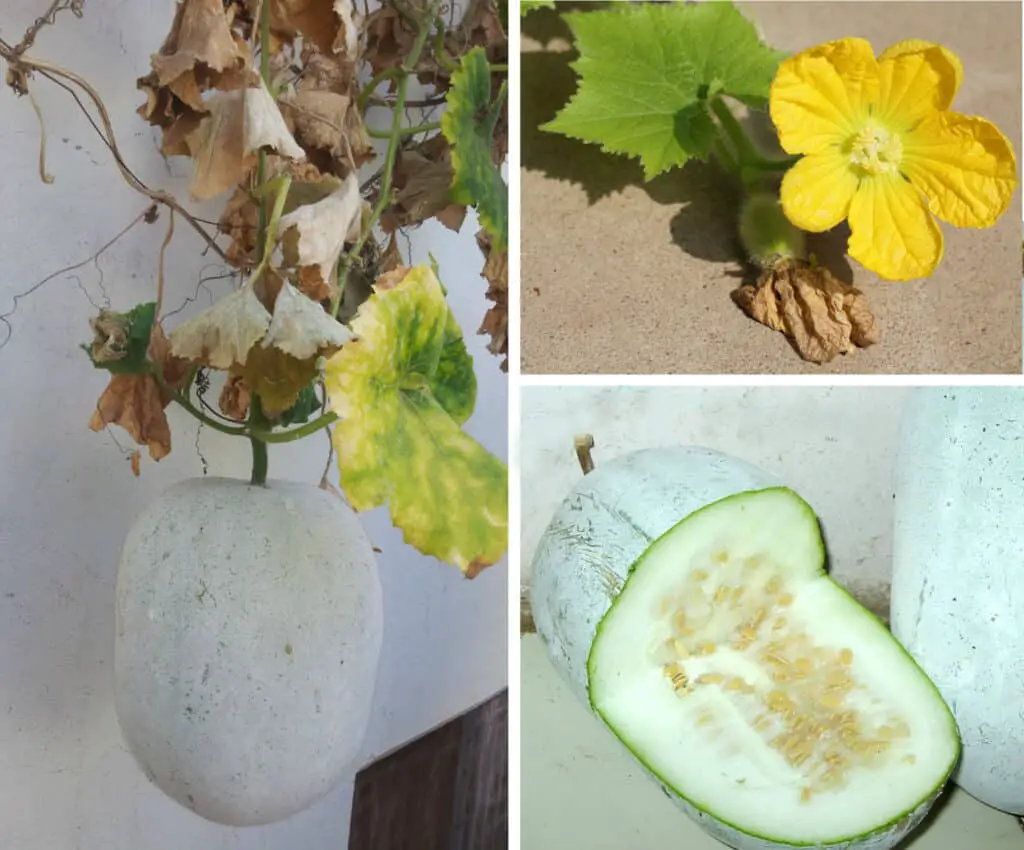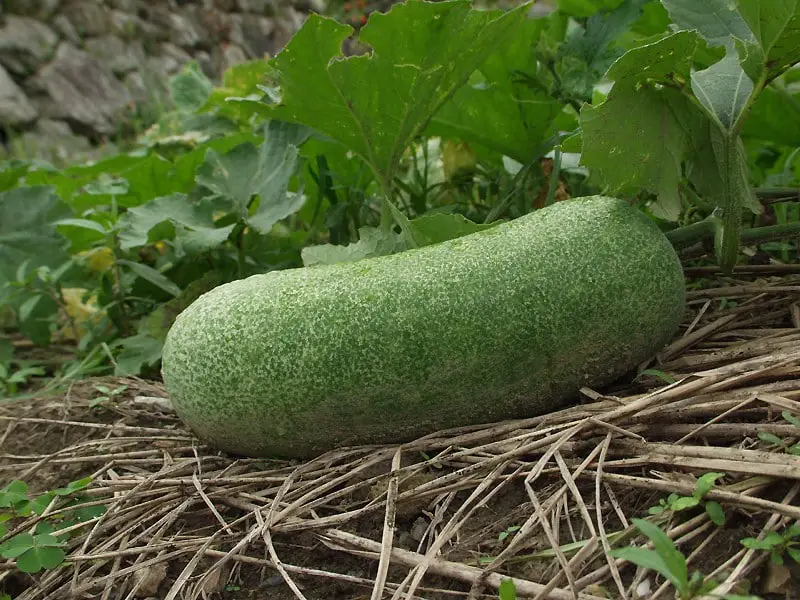Table of Contents
What Are Winter Melons?
Not all melons are as juicy as the typical watermelon you would find in summer. Some, like the winter melon, are much closer to a cucumber or other seedy or dense fruits. In fact, whilst growing into the delicious treat that is enjoyed all around Asia (and more recently – the world) it is covered in hairs. That’s right – you’d be forgiven for thinking it was a huge kiwi thanks to its furry appearance.
Once it reaches a mature state, it slowly loses the hairs it has grown and starts developing a waxy coating. Hence the name, wax gourd. It is this robust coating that extends the life of the winter melon far longer than you would expect. Often more than a whole year!
Also Known As:
- Ash Pumpkin
- Wax Gourd
- White Gourd
- Chinese Preserving Melon
What Do Winter Melons Taste Like?
Lacking the juicy interior of a watermelon, the winter melon instead has an entirely solid and fleshy centre (except for the seeds, of course). This dense fruit’s insides are often compared to the rind of a normal watermelon. This taste is so similar that you would be hard-pressed to tell the difference in just a simple taste test.
It tastes wonderfully sweet, yet retains a sharp, unpleasant bite when eaten raw. It is instead preferable to partially cook the flesh which opens up the flavours and allows for excellent infusions of flavour into the flesh.

How Best to Store Them?
The winter melon does not play fair when it comes to storage. Whilst most other fruits are edible for up to a week (if they are lucky), this excessively waxy gourd manages to stay perfectly fine for up to a year if stored properly! Cold and dark places are perfect for keeping your winter melons fresh and ready to eat, but you probably guessed that.
However, once you pierce that natural waxy barrier, you have just a few days to finish the whole thing before you should consider getting a new one. Be sure to keep your pierced or sliced winter melon in the fridge to extend its life as far as possible.
Cooking With A Winter Melon
The easiest way to approach cooking with this waxy gourd is to approach it like squash. Preparation of a winter melon requires that you remove the seeds and skin, leaving only the dense flesh for use in dishes. However, unlike other melons, you don’t want to eat this raw – unless you have a thing for rock-solid cubes of food. Instead, consider slow and gentle cooking techniques such as steaming and boiling to soften the pieces ready for you to use or eat.
These softened cubes of melon are excellent vessels for flavour, absorbing significant aromas and tastes from the surrounding liquids. Soup is the traditional preparation for a winter melon, being very popular in Cambodian and Vietnamese cuisines. But its uses don’t stop there, candied winter melon is a popular sweet treat in China and the Philippines, with the final product taking on a crystallised salt-like appearance. Where To Find Winter Melons
A less common way of cooking winter melons is deep-frying, but that doesn’t mean it isn’t delicious! If you take the cubed flesh of a winter melon and apply a light coating of flour (or batter if you are so inclined) before dipping it into hot oil, you will be left with a remarkably crispy, yet sweet treat. You are able to do this with winter melon, as opposed to watermelon, due to the lower water content. If you attempted to fry a normal watermelon you would be risking severe burns as the water reacts violently with the hot oil.

Nutrition
Before we get into the nutrition, it is worth mentioning that many cultures, particularly in India, claim that winter melons possess medicinal properties that have led to their use in many homemade remedies for dysentery.
On the whole, there is nothing special about this gourd, except that it is an excellent source of vitamin C and can be enjoyed as part of a healthy and balanced diet.
Winter Melon F.A.Qs
1. How Big is a Winter Melon?
A lot bigger than you think, with properly matured melons reaching 80cm in length. In contrast, its width is often a fraction of this leading to a typically elongated shape like an eggplant or aubergine for the UK readers.
2. Winter Melons vs Watermelons
Winter melons possess an almost entirely fleshy interior, filled from skin to seed with dense, rind-like flesh. Whereas watermelons are far juicier and much more approachable when eaten raw. Those looking to replicate the taste of winter melons can use the watermelon rind as an excellent substitute.
3. Where To Buy Winter Melons
The best place to find a winter melon is at your local Asian grocery store, where they often have extra stock on hand due to its long shelf life. Whilst you are there, be sure to try and find some candied winter melon to sample – it will be worth it!
4. Can You Eat the Leaves?

Absolutely! The flowering leaves, shoots, and tendrils can be eaten as a stand-in replacement for other greens such as lettuce and spinach. But beware, it is unlikely that you will be able to find a flowering winter melon without growing it yourself.
5. Can You Grow Winter Melon at Home?
Growing this waxy gourd at home may sound daunting, after all, you just found out they can grow to be 80cm long! But growing winter melon at home is one of the easier fruits you can attempt. These gourds are not particularly fussy when it comes to growing conditions, requiring only that they get enough sun and water. It typically takes around 110 days from seed to harvest, which is far longer than a trip to the store but also far more rewarding.










